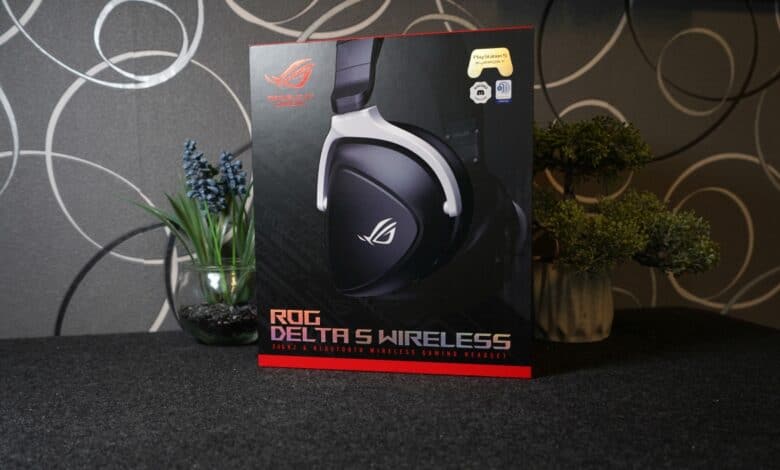
The S-class in Asus’ headset lineup is getting a new addition. After the top model Delta S, the manufacturer unceremoniously cuts the cord and now launches the gaming headset as a wireless model. But both models differ significantly more than just a word in the name, as our Asus ROG Delta S Wireless review reveals.
Specifications
| Build | Over-ear |
| Driver | 50 mm neodymium |
| Frequency range (headphones) | 20 – 20,000 Hz |
| Impedance | 32 Ohm |
| Microphone type | bi-directional, with AI noise reduction |
| Frequency range (microphone) | 100 Hz – 10kHz |
| Sensitivity (Microphone) | -37 dB |
| Connectors | USB Type C |
| Wireless modes | 2.4 GHz wireless; Bluetooth 5.0 |
| Range (Wireless) | Circa 15 m |
| Battery life | Up to 25 hours |
| Weight | 310 g |
| Compatibility | PC, Mac, PlayStation 4, PlayStation 5, Nintendo Switch, Smartphone |
| Price | € 168.53 * |
Asus ROG Delta S Wireless review: the scope of delivery
The Asus ROG Delta S Wireless comes in a manufacturer-typical black cardboard box with red details, which immediately welcomes us after opening it to let us know that we henceforth belong to the elite Republic of Gamers community.
In addition to the wireless gaming headset itself, a lot of accessories are included. Among them is a fabric-covered USB-A to USB-C charging cable with a length of one meter, a matching USB-C to USB-A adapter, and two additional ear pads made of mesh. Corresponding counterparts made of protein leather are already pre-installed.
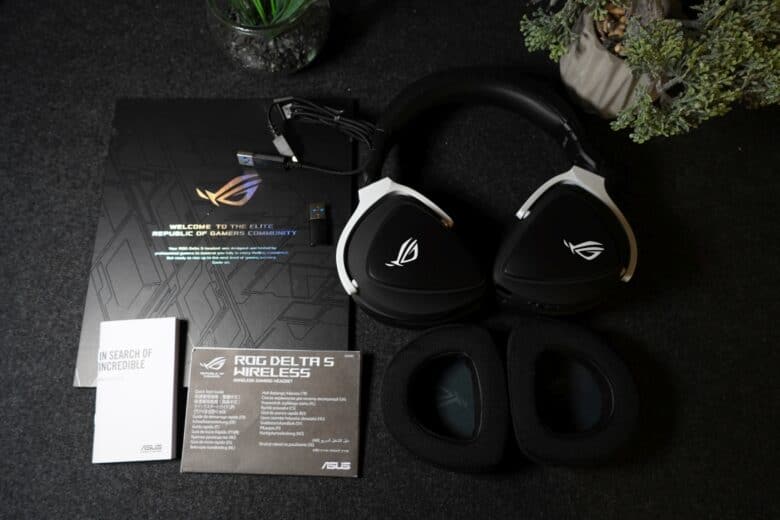
The USB-C wireless dongle is hidden magnetically in the bottom of the right ear cup. Unusual, but a very cool solution. A manual and warranty card round off the scope of delivery.
Design and workmanship
- High-quality, sleek look
- No RGB lighting
The Asus ROG Delta S Wireless picks up on the design of the manufacturer’s Delta series, but differs in many ways from the Ur-Delta (our review) or even its sibling called Delta S. For example, the wireless model does completely without RGB lighting in order to not unnecessarily drive up battery consumption.
Of course, the D-shaped ear cups, which are modeled after the shape of the human ear, are once again striking. This is the flagship of the headset series. They are, like almost the entire headset, in a matte black color. The white embossed manufacturer logo on the ear cups and the silvery-white transitions to the headband contrast with this.
It is also noticeable that the headset no longer has a classic gooseneck microphone, as was still found in the Delta S. Instead, the wireless model relies on two gooseneck microphones. Instead, the wireless model relies on two tiny beamforming microphones, which can only be seen as small dots on the inside of the headset. The USB dongle now sits (magnetically) where the microphone arm used to be. Very handy when you’re on the go.
All controls are perfectly accessible on the left ear cup. The volume wheel is located on the back, which has a raised section in the middle and is thus easy to feel. You can automatically mute the sound by pressing it.
Below that, Asus places the multifunctional button, which is used for media control, for example. It is followed by the mode button, which you can use to turn off the headset and switch between wireless and Bluetooth mode. Finally, there is a status LED and the USB-C port, which you can use to power the headset for charging.
Processing of the Asus ROG Delta S Wireless
- Relatively a lot of plastic
- Robust construction around ear cups and headband
I would describe the build quality of the Asus ROG Delta S Wireless as good to very good. It feels like everything presents a bit softer, more compliant and not quite as robust as I’m used to from other headsets in this price range. This is mainly due to the relatively high plastic content of the device.
However, that is only a feeling, because purely technically, the wireless gaming headset does not actually make any gross flubs and convinces with a pleasant and high-quality feel. The metal headband is nice and sturdy, but at the same time offers more than enough play to enable a high wearing comfort.
However, the new Asus model does not feel quite as robust as the similarly heavy EPOS H3PRO Hybrid (our review). Of course, I cannot yet say how the longevity of the materials is. But here, the past already showed that the Delta headsets also provide pleasure in the long run.
Comfort
- Very high wearing comfort, even in the long term
- Heat accumulation under protein leather ear cups
- Additional cushions made of breathable fabric included
Ear cups of headsets and headphones now come in all shapes and colors. From the classic round to an oval shape to half moons like in the HYTE Eclipse HG10, I’ve seen and/or worn just about everything by now.
The Asus ROG Delta S Wireless relies on a D-shape (flagship of the series) for the ear cups, which we’ve always liked. This is no different with the latest representative. The wearing comfort is, in large parts, simply outstanding.
To start with the only point of criticism: It gets very warm very quickly, especially under the pre-installed protein leather ear pads. Especially in summer temperatures or heated battles, the heat builds up a bit more in this headset than I’m used to from most competitors.
However, you can easily counteract this by putting on the included synthetic fiber ear cushions (ROG Hybrid Ear Cushions), which can be done in seconds with just a few simple steps. They are significantly more air-permeable, breathable and also pleasantly soft.
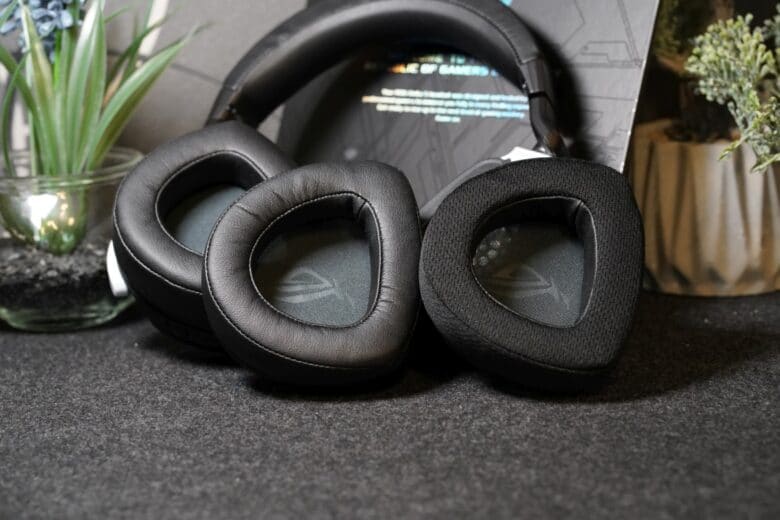
However, the change in ear pads is also accompanied by a change in sound and sealing. The synthetic leather version is much tighter and insulates better against ambient noise, while the sound comes across a bit more open with the fabric ear pads.
Otherwise, the wearing comfort is convincing all along the line, which is mainly due to the generous ear pads that offer more than enough room even for large eardrums – even during longer gaming sessions. Despite the headset’s comparatively high weight of 318 grams, the contact pressure is pleasantly low. Several hours of gaming or listening to music is absolutely comfortable with the Delta S Wireless.
Practical test and handling
- Radio and Bluetooth operation possible
- USB dongle does not work on the smartphone
- Successful operation
In practice, the Asus ROG Delta S Wireless proves to be enormously versatile. Whether in combination with the USB-C dongle in the 2.4 GHz wireless band or completely without helpers via Bluetooth 5.0: The headset connects to almost every audio source and is ready for use in just a few steps.
Unfortunately, it is not possible to get the headset to play music on an Android smartphone with the USB dongle. This is a shame, especially since Asus hints at this in a product picture. However, it apparently only works with the in-house ROG Phones. But hey: Bluetooth is also possible.
In practice, the latency is equally convincing in both operating modes. The wireless network is of course even faster and clearly the better option for competitive gaming on PCs and laptops. By the way, also in terms of sound, but more about that later.
The buttons and controls are also very precise. I find the selected position to be excellent for reaching everything without problems. I also like the haptics very much. The volume wheel has a pleasant grid, which enables a precise setting. It is also practical that it is clickable and thus mutes the microphone without further ado.

The multifunction button also does a good job and is mainly used for media control. Pressing it once starts or pauses playback, multiple presses change to the previous or next track. If you hold the button down longer, the Delta S Wireless switches to Bluetooth pairing mode.
However, we were annoyed by the fact that when using the USB dongle during our test, it interfered with other wireless receivers, in this case the Logi-Bolt receiver of my wireless mouse. It reacted sluggishly in places or even completely refused to work for a short time. I have never experienced this before. Neither with Razer, nor with Corsair and how they are not all called.
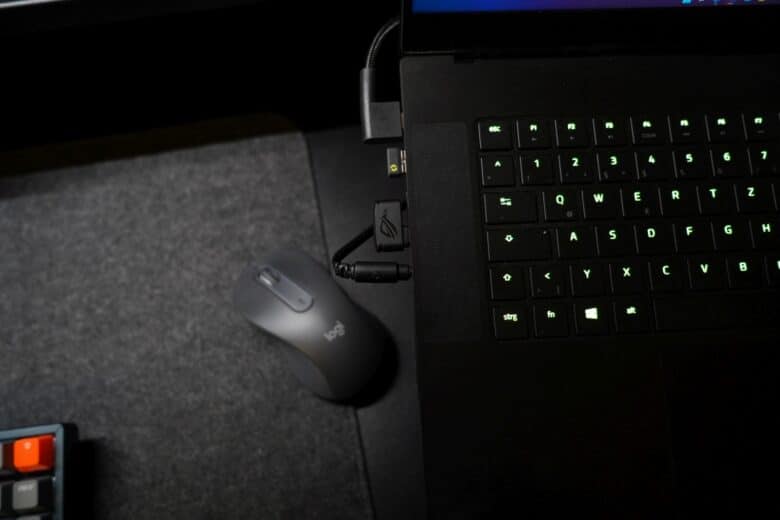
Range, battery life and charging time
- 15 meters (wireless) or 10-12 meters (Bluetooth) range
- 25 hours of battery life only average, but charges very quickly
The wireless range of the Asus ROG Delta S Wireless is good. In the 2.4 GHz wireless band, I reached a distance of around 15 meters in my indoor test in thick basement walls before there were dropouts in the sound. This puts the ROG model on par with the best wireless gaming headsets. Of course, the range is a bit shorter in Bluetooth mode, but even here it is a very good 10-12 meters.
The battery life is also on a good, although not outstanding level. We can largely confirm the 25 hours promised by the manufacturer in the practical test. And yet: Other headsets reach twice that, while a HyperX Cloud Alpha Wireless even allows 300 hours of use.

Of course, the battery life also depends on the settings (surround sound on/off), as well as the selected volume and varies accordingly. On the other hand, charging is extremely fast. 15 minutes with the USB cable connected is enough for three hours of playback. In total, a charging process takes about one and a half hours.
What I can’t quite understand, however, is the battery status display. It is only available in the companion app and differs greatly between the value that Windows displays and the value that my Android smartphone shows me. On the PC, the program speaks of 40 percent, but on the smartphone, a few seconds later, I am shown 90 percent. So which is true? One does not know.
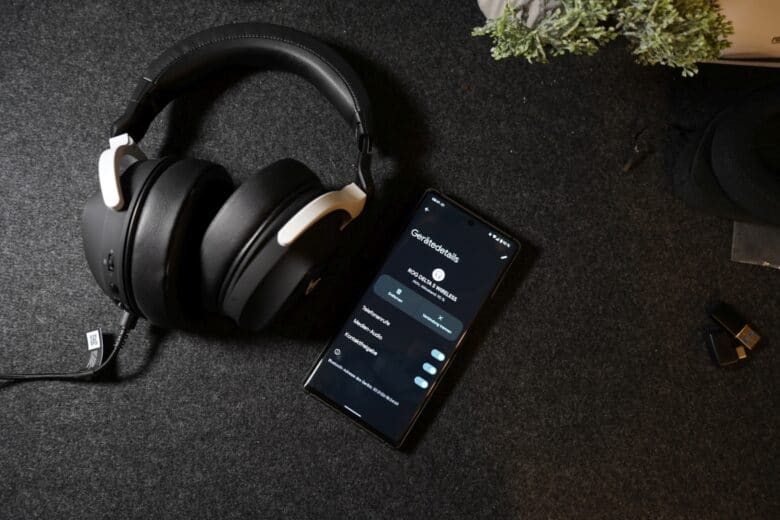
Recording and playback quality
- No Hi-Fi DAC installed (as in the Delta S)
- 50 mm drivers
- Sound needs fine tuning in companion app
Sound-wise, the Asus ROG Delta S Wireless presents itself a bit slimmed down compared to its wired sibling. The latter offered the high-resolution amplifier “Hi-fi ESS 9281 Quad DAC”, which the wireless model does without. Thus, you have to do without the high-resolution sound including the MQA renderer (Master Quality Authenticated).
This is especially annoying for all those who simply expect a wireless model of the ROG Delta S due to Asus’ naming. However, the wireless headset is simply not. To put it mildly, I find that very cheeky.
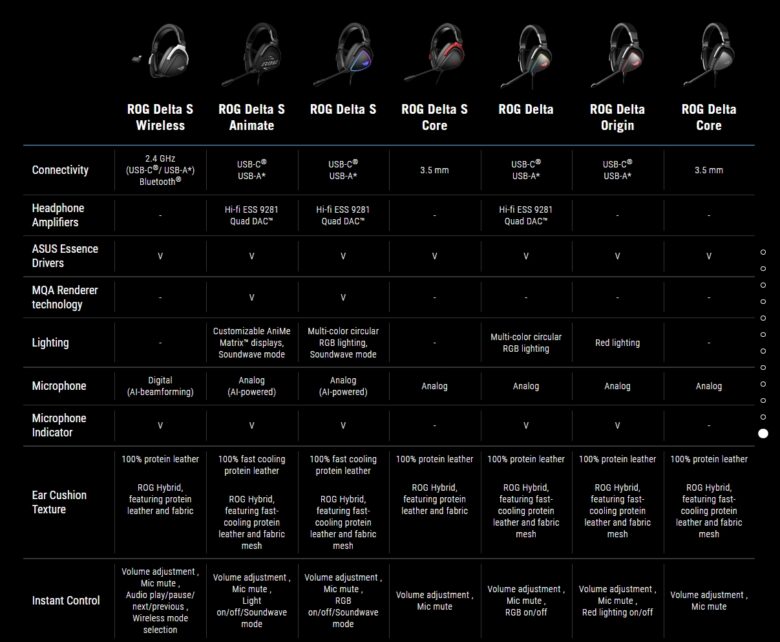
But enough grumbling. So how do the 50 mm Asus Essence drivers sound? First of all, quite well, in connection with the diverse setting options within the Armoury Crate software even very well. However, this should always run in the background on the PC or notebook, since the headset otherwise only uses the standard mix.
And, as mentioned, it turns out well. However, it is not on the same level as the similarly priced competition. The bass is too much in the center, while the mids lack clarity. It is a pleasing sound that is primarily designed for powerful effects in games and lacks a bit of openness and differentiation (especially between the mids and trebles) in the high frequencies.
Fortunately, you can pimp the sound with the software and thus create a customized sound that doesn’t have to hide behind most other wireless gaming headsets.

However, the headset never reaches the sound brilliance of an EPOS H3PRO Hybrid or Corsair HS80 (our review). In games, you benefit from very good spatial localization thanks to virtual 7.1 surround sound, but it cannot quite keep up with the top models here either.
There are also enormous differences in sound quality between wireless and Bluetooth operation. In the latter, the trebles sound too shrill and exaggerated at high volumes, but the bass is a bit more in the background. This quickly makes listening to music via Bluetooth quite exhausting, but it’s enough for some musical sound from time to time.
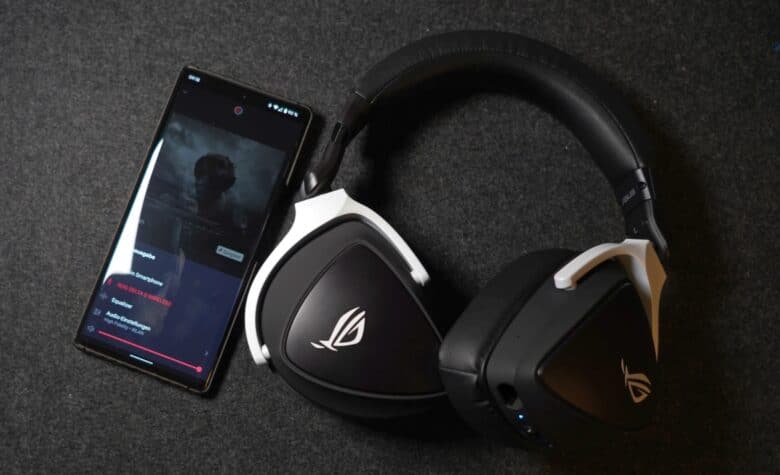
Microphone quality
- Two tiny beamforming microphones
- Extensive AI features, with impact on sound
The ROG Delta S Wireless, as mentioned at the outset, does away with a proper microphone boom and relies on bi-directional dual beamforming microphones. They offer a sensitivity of -37 dB and cover a frequency band from 100 Hz to 10,000 Hz. You can also adjust various settings within the software if desired.
These include an AI noise reduction or a voice amplification that is supposed to provide clearer communication (called “Perfect Voice”). You can fine-tune these values in the software in several stages or quite freely.
Qualitatively, the microphones, without the assistance of artificial intelligence, do a good job. I also find it absolutely amazing what the headset here gets out of these two tiny little microphone holes in terms of sound. For voice chats or communication in various games, the performance offered is really good. I can be understood clearly and dynamically.
However, without any intervention, the Delta S Wireless picks up background and ambient noise comparatively strongly. With AI noise reduction, it then gets significantly better in the dynamic range in louder environments, but you can already clearly hear the compression due to the technology. On the other hand, I find it very good that no syllables are swallowed. We have seen this quite differently in similar solutions from other manufacturers.
App connection: Armoury Crate
- Overwhelming app with a large scope
- Comparably low CPU load
Asus’ all-round solution Armoury Crate is used as the companion app, in which the headset only gets a small, but extremely extensive subsection. At least, after we first updated the firmware.
For example, you can determine the sound quality and make sound adjustments in the audio settings. There are different modes that are, for example, designed for game genres, movies or music.
You can also add a bass boost or voice amplification. You can also adjust the sound to your preferences with the help of a 10-band equalizer and also control the three AI functions of the microphones.
You can see the current battery level under the “Energy” item, but it can also be seen in the app icon on the taskbar. You can also determine how many minutes of non-use the headset should switch to energy-saving mode. There is not much more to see in the app. However, the scope and the functions are pleasing.
Asus ROG Delta S Wireless review: conclusion
The Asus ROG Delta S Wireless looks chic, has a high-quality build and offers a really good wearing comfort. On the plus side, the headset also boasts an impressive volume, convincing operation, and versatile connectivity.
However, you have to do a bit of fine-tuning before the wireless device can really deliver the best possible sound. Out-of-the-box, it is only quite well positioned in terms of sound, but can even sound very good with the right settings.
However, there is also comparatively much shade. The battery life is average, but the charging time is very good. The sound quality drops considerably in Bluetooth mode and the microphone quality could be better, especially when AI functions are enabled. However, the result is quite impressive for a beam-foaming microphone – even though it cannot hold a candle to real gooseneck microphones.
I also find it almost a bit cheeky that the name is strongly based on the ROG Delta S, but the wireless model lacks the hi-fi sound and amplifier. The interference of the USB dongle with solutions from other manufacturers also almost drove me up the wall, as I have not experienced anything like that in this form.
So in the end, the Asus ROG Delta S Wireless remains a really comfortable, high-quality and versatile gaming headset with a really convincing sound, at least on the PC, but in the end it falls short of its possibilities and simply turns out to be too expensive.
Asus ROG Delta S Wireless
Workmanship
Comfort
Sound quality
Recording quality
Features
Value for money
86/100
Smart wireless gaming headset with high wearing comfort and dual connection. However, the sound needs a lot of fine-tuning and the microphone quality is only partially convincing.


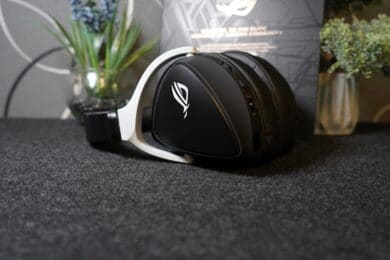
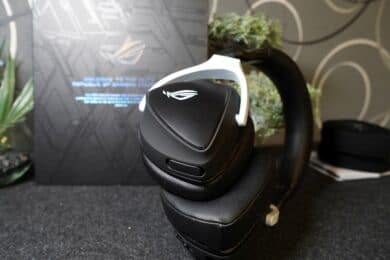
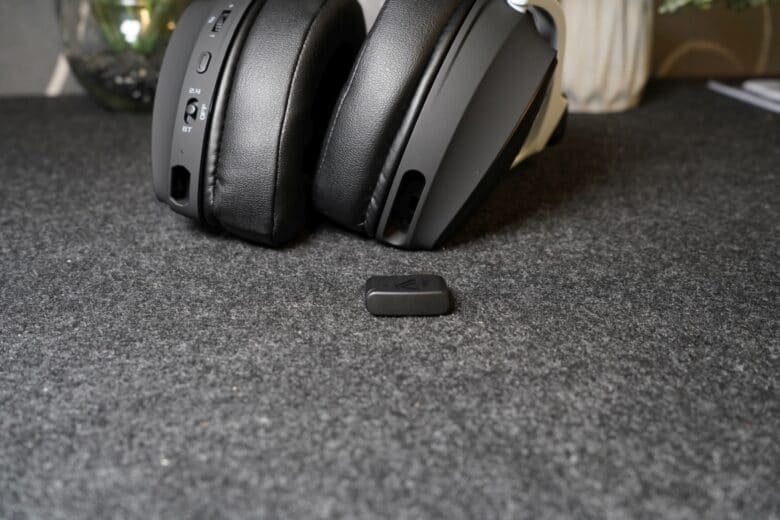
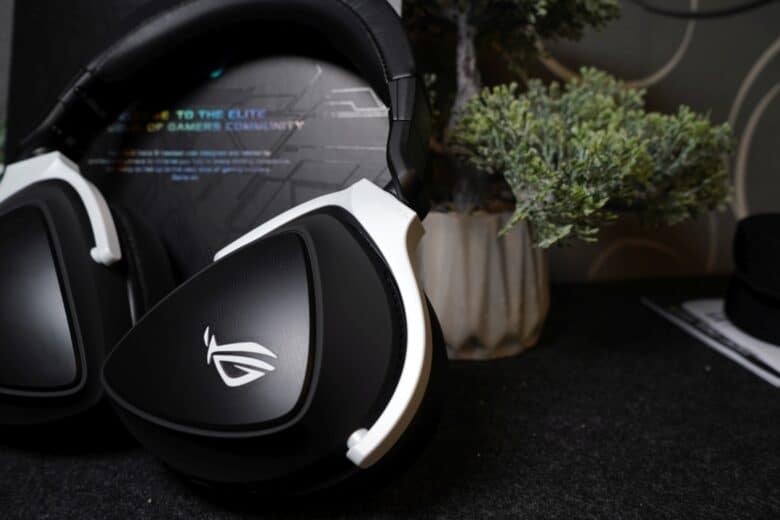
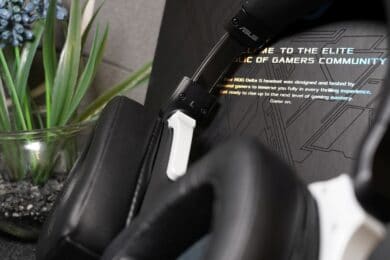
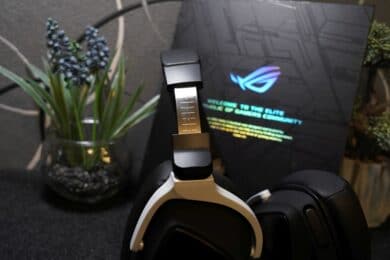

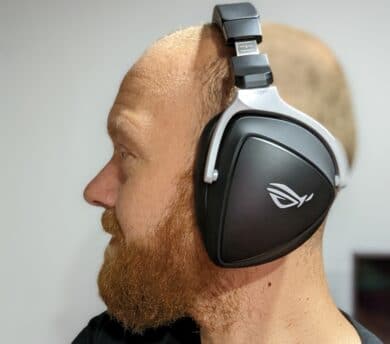

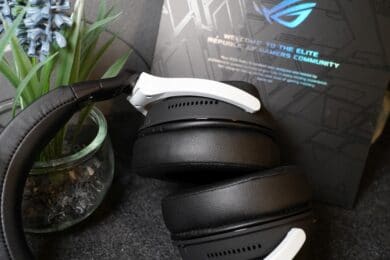









No replies yet
Neue Antworten laden...
Gehört zum Inventar
Beteilige dich an der Diskussion in der Basic Tutorials Community →